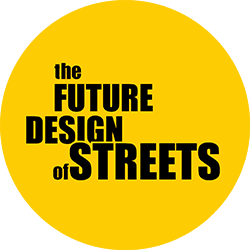REVERSIBLE APPROACHES
“Tactical urbanism can be a tool for advocacy and systemic change with the aim to create liveable public space and streets for everyone.”
Giulia Sicignano
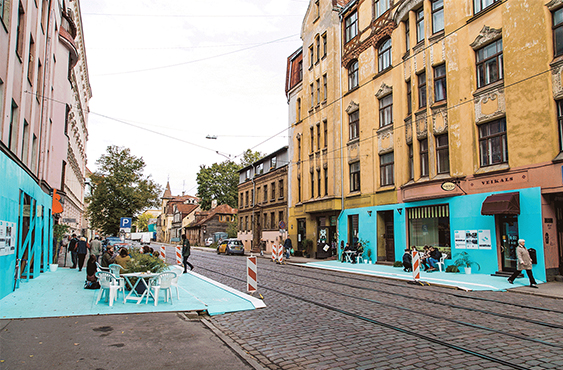
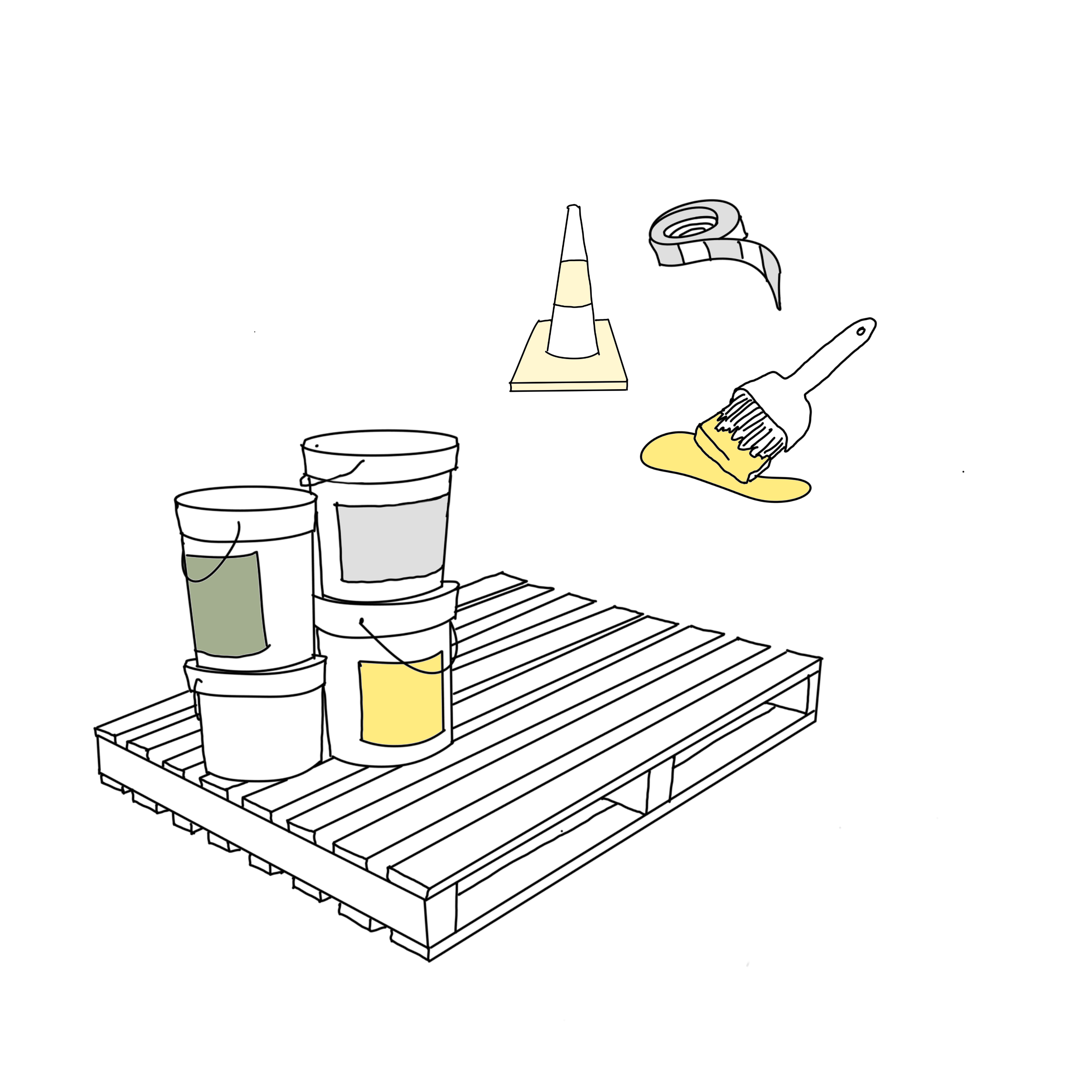
PAINT&TAPE
Street use can be changed rapidly and easily using paint and tape for temporary events. This can be made in major city events, or organised on a neighbourhood level.
The recent sanitary crisis showed us, ona big scale, the power that reversible approaches or tactical urbanism can have:quick, light, and cheap.
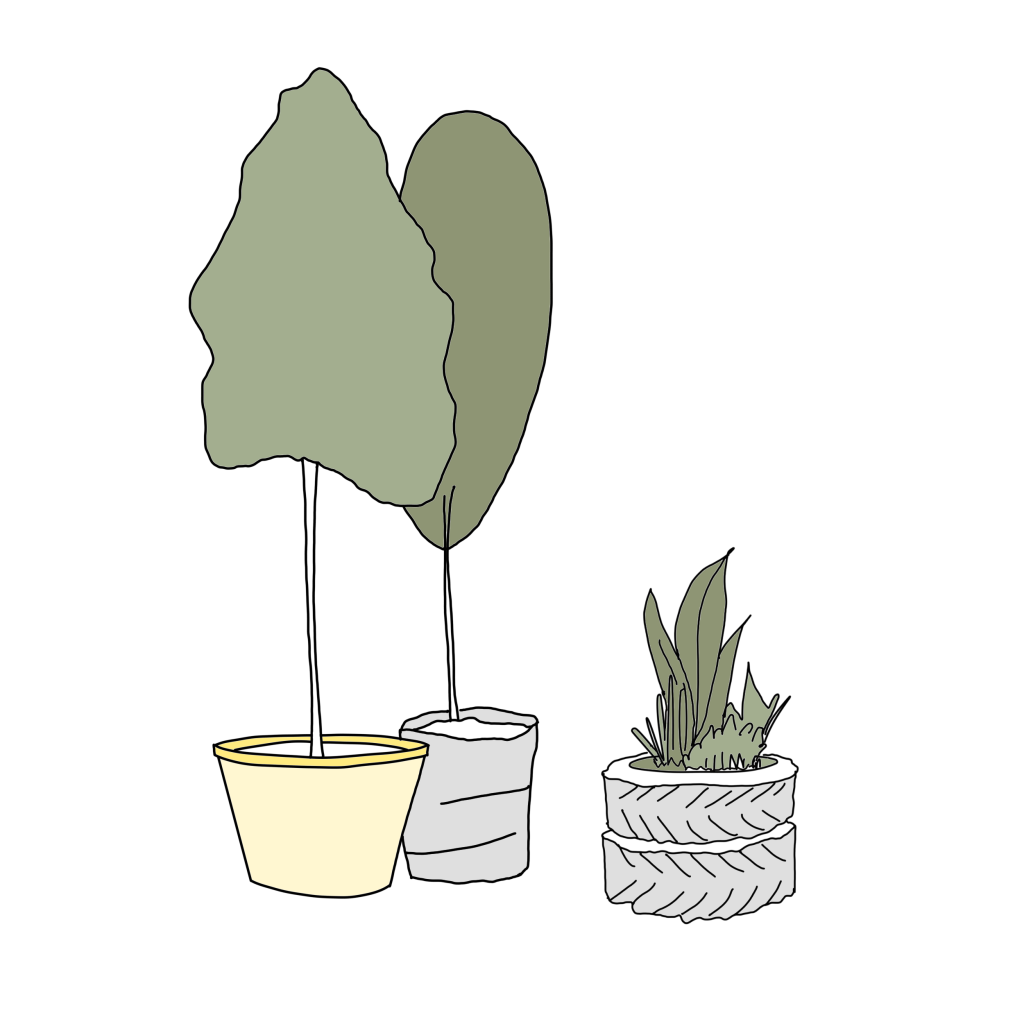
PLUG-IN COMPONENTS
Some light construction or movable urban furniture, like parklets, can introduce conditions for social meeting points, sport, sitting places or bringing tree/plant-pots into streets. With local communities, new uses can be explored by experimental projects. After positive results, the pilot phase can be turned into a more permanent intervention.
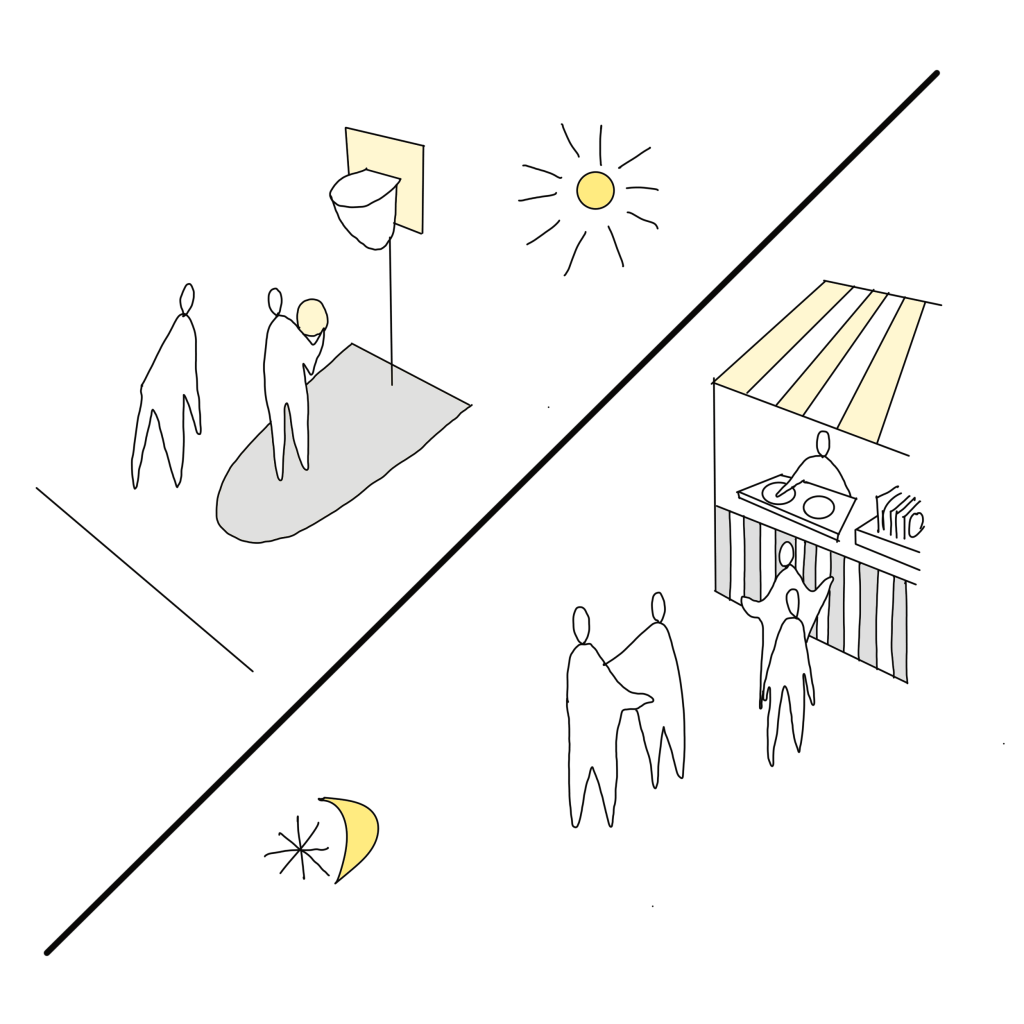
DAY RHYTHM
Streets can be (temporarily) used differently along the various moments of a day, week or month. The logic of shopping and school streets can be applied on a range of other urban streets.
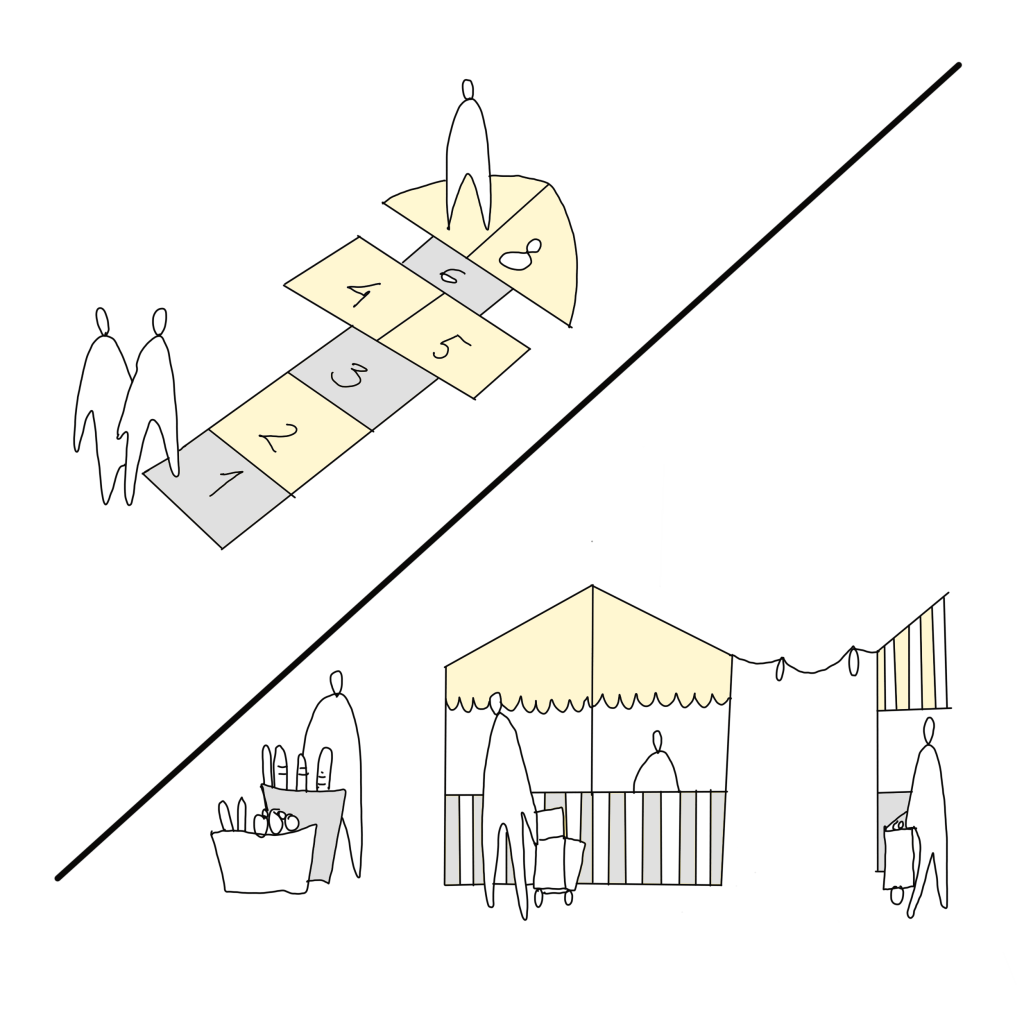
ROOM FOR EVENTS
Periodical events, from a play street to a music concert, need a certain basic infrastructure (electricity, traffic controlling objects, security service, etc.). This can be designed in an ambulant manner or can be part of the foundational design of streets.
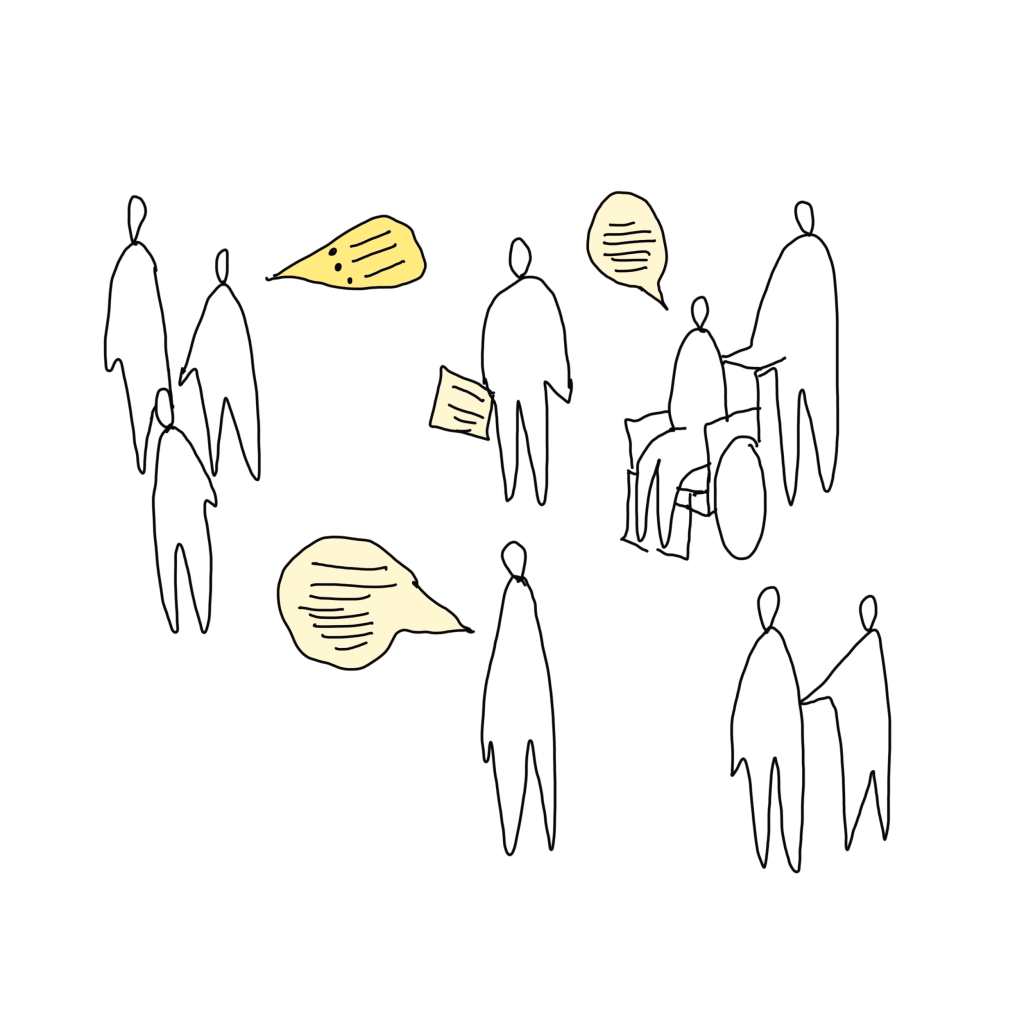
INVOLVEMENT
Improving existing streets means to involve local communities and existing social, cultural and economic structures. Temporary street projects can help discover adequate and site-specific reversible approaches that improve the local living conditions.
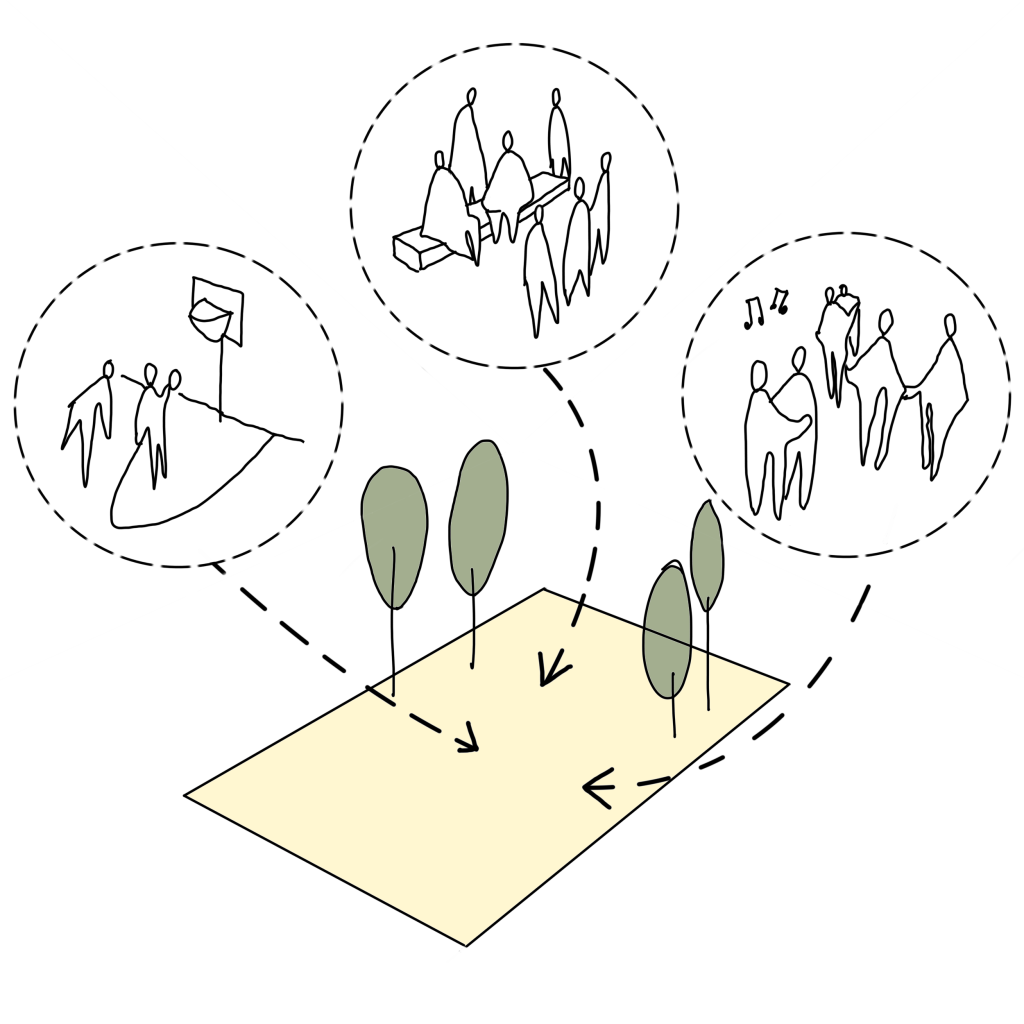
OPEN SPACES
Street spaces should have a certain degree of openness to unforeseen uses and activities. Besides some flexibility and the possibility to facilitate (temporary) adaptations, this opens also another look to design streets with a non-specific-function approach.
